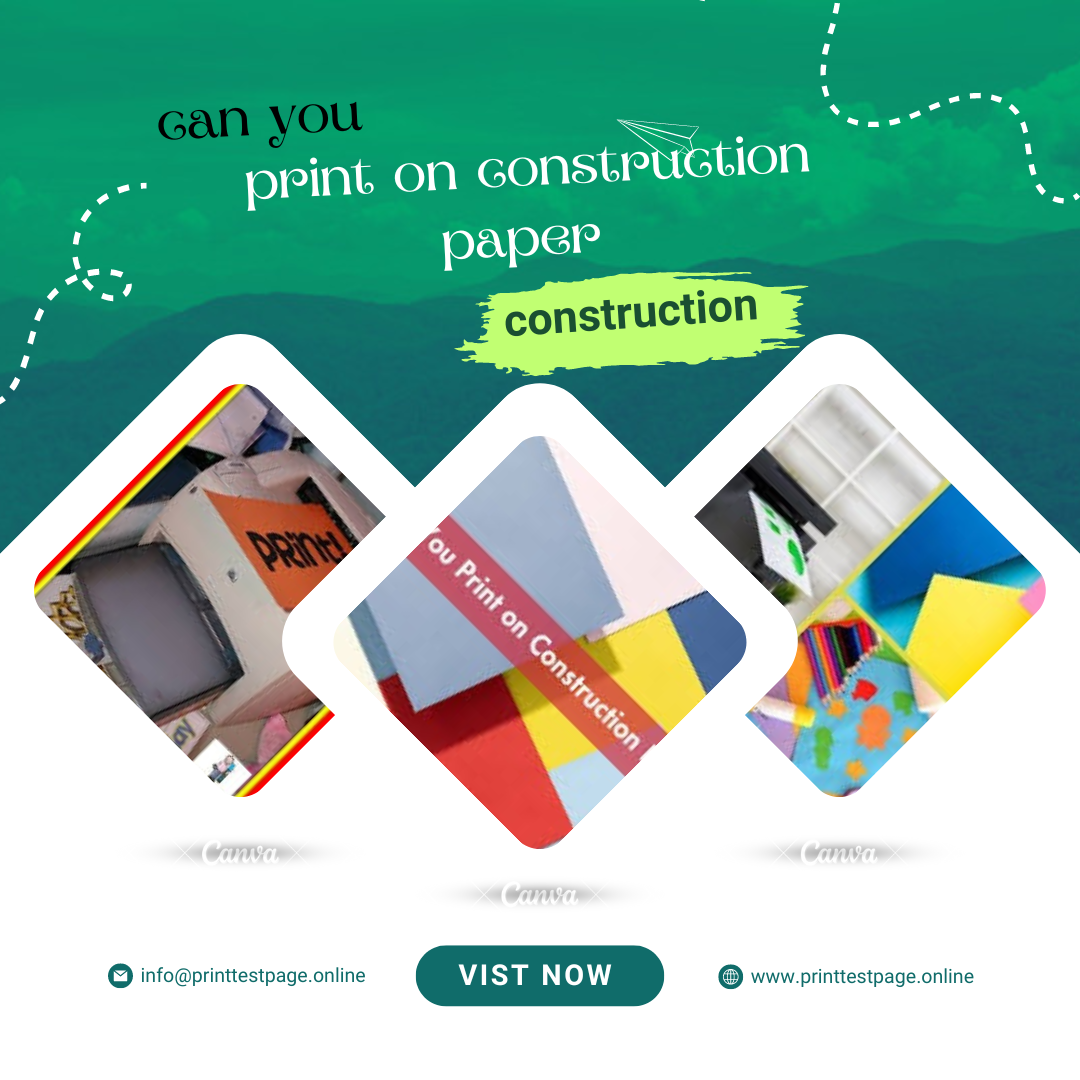Printing on construction paper can be a challenging yet rewarding endeavor. Whether you’re a teacher preparing vibrant educational materials, a craft enthusiast, or a professional looking to add a creative touch to your documents, understanding the nuances of printing on construction paper is essential. This comprehensive guide will provide you with all the information you need to achieve the best results.
Understanding Construction Paper
Construction paper is a type of colored paper that is typically used for art projects and educational activities. It is thicker and more textured than regular copy paper, making it ideal for crafts and projects requiring durability. However, its texture and weight can pose challenges when printing.
Why Print on Construction Paper?
Printing on construction paper can offer several benefits:
- Vibrant Colors: The rich hues of construction paper can make printed images and text stand out.
- Durability: Construction paper’s thickness provides added durability, making printed materials more resistant to wear and tear.
- Creative Projects: For crafting and educational purposes, printed construction paper can enhance visual appeal and engagement.
Types of Construction Paper
Before diving into the printing process, it’s essential to understand the different types of construction paper available:
- Standard Construction Paper: The most common type, available in various colors and weights.
- Textured Construction Paper: Features a textured surface that can add a unique look to printed materials.
- Glow-in-the-Dark and Metallic Construction Paper: Special types that offer unique visual effects.
Choosing the Right Printer
Not all printers are suited for printing on construction paper. Here’s what you need to consider when choosing a printer:
Inkjet Printers
Inkjet printers are commonly used for printing on construction paper due to their ability to handle various paper types and sizes. When using an inkjet printer:
- Check the Paper Tray Capacity: Ensure the printer can accommodate the thickness of construction paper.
- Use High-Quality Ink: Opt for high-quality ink to achieve vibrant and long-lasting prints.
Laser Printers
Laser printers can also be used, but they may require specific settings:
- Adjust Printer Settings: Set the printer to handle heavier paper weights to avoid paper jams.
- Consider Toner Quality: Use high-quality toner for clear and crisp prints.
Preparing Construction Paper for Printing
Proper preparation is crucial for successful printing on construction paper. Follow these steps to ensure optimal results:
Cutting and Sizing
Ensure that the construction paper is cut to the appropriate size for your printer:
- Trim Edges: Use a paper cutter to ensure clean and straight edges.
- Adjust Paper Size Settings: Match the paper size in your printer settings to avoid alignment issues.
Handling and Loading
Handle the construction paper carefully to avoid creases and smudges:
- Smooth the Paper: Gently smooth out any wrinkles or folds.
- Load Properly: Place the paper in the printer’s feed tray, aligning it according to the manufacturer’s instructions.
Setting Up for Printing
To achieve the best print quality, adjust your printer settings accordingly:
Print Quality Settings
Adjust the print quality settings to match the paper type:
- Select the Right Paper Type: Choose “Heavyweight” or “Cardstock” if available.
- Adjust Print Density: Increase density for more vibrant colors.
Print Preview
Always use the print preview function to check how your design will appear on construction paper:
- Check Alignment: Ensure that all elements are properly aligned.
- Review Colors: Verify that colors are as expected.
Printing Techniques
Different printing techniques can affect the final result:
Direct Printing
For straightforward projects, direct printing is effective:
- Print in Layers: If printing multiple colors or elements, consider printing in layers to avoid smudging.
- Allow Drying Time: Let each layer dry completely before proceeding.
Test Prints
Perform test prints on a sample piece of construction paper to fine-tune settings and ensure the best quality:
- Evaluate Results: Check for color accuracy, alignment, and any potential issues.
- Make Adjustments: Modify settings as needed based on test print results.
Troubleshooting Common Issues
Even with careful preparation, you might encounter some common issues. Here’s how to address them:
Paper Jams
Paper jams can occur when printing on thicker paper:
- Check for Obstructions: Remove any debris or misaligned paper.
- Adjust Settings: Ensure that the printer settings match the paper type.
Ink Smudging
Ink smudging can occur due to the textured surface of construction paper:
- Use Quick-Drying Ink: Opt for ink that dries quickly to prevent smudging.
- Allow Adequate Drying Time: Give the print enough time to dry before handling.
Color Variations
Color variations may arise from differences between screen displays and printed results:
- Calibrate Your Monitor: Ensure your monitor is calibrated for accurate color representation.
- Use Color Profiles: Apply color profiles for consistent results.
Creative Uses for Printed Construction Paper
Once you’ve mastered the printing process, explore various creative applications:
- Educational Materials: Create visually appealing worksheets and activities for students.
- Craft Projects: Design unique greeting cards, decorations, and scrapbook elements.
- Event Decorations: Print custom banners, signs, and invitations for events.
Conclusion
Printing on construction paper offers a fantastic way to enhance your projects with vibrant colors and durability. By choosing the right printer, preparing the paper correctly, and fine-tuning your settings, you can achieve impressive results. Whether for educational purposes, crafting, or professional use, understanding these principles will help you make the most out of your construction paper printing endeavors.
